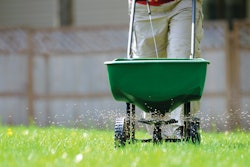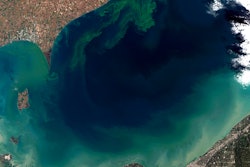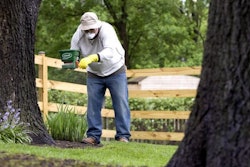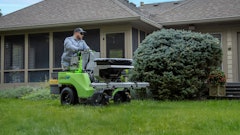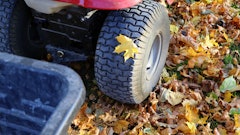As the growing seasons bears down on us, a Maryland newspaper is reminding residents of a new law that’s in place this spring.
Maryland’s Lawn Fertilizer Law went into effect this past October. Its overarching goal is to protect the cherished Chesapeake Bay from excessive nutrient runoff in the way of phosphorus and nitrogen. Since 44% of all fertilizer sold in Maryland is reportedly lawn fertilizer, lawns have landed smack dab in the regulators’ crosshairs. Certain restrictions guiding lawn fertilizer use have been in place since 2001, but this new law takes additional measures.
Components of the law include:
- No more phosphorus in lawn fertilizer; specialty products with some phosphorus are available for new lawns or when a soil test shows a need for phosphorus
- 0.9 pounds of total nitrogen per 1,000 square feet per application and 0.7 pounds of soluble nitrogen per 1,000 square feet except when using enhanced-efficiency fertilizer
- Enhanced-efficiency controlled-release fertilizers limited to 2.5 pounds per year, and a maximum monthly release rate of 0.7 pounds per 1,000 square feet
- Black-out period (no fertilizer applications) from November 15 to March 1; lawn care pros have a start date of December 1, but can only use water-soluble fertilizer at 0.5 pounds per 1,000 square feet from 11/16 to 12/1
- No product allowed on sidewalks, driveways or other impervious surfaces; must be swept back onto the lawn
- No applications within 15 feet of waterways, or 10 feet when using a drop spreader or rotary spreader with deflector shield, or a targeted liquid spray applicator
- No applications when heavy rains are predicted
- For professionals only, natural and organic products containing phosphorus cannot exceed 0.25 pounds per 1,000 square feet with an annual maximum of 0.5 pounds per 1,000 square feet; cannot be applied when soil tests show “optimum to excessive” phosphorus levels already in the soil
- Professionals must be certified or work under direct supervision of certified professional
- Homeowners subjected to same usage restrictions as lawn care professionals
- Violators can face penalties up to $1,000 first offense and $2,000 for each subsequent violation
Adjusting to the new restrictions. Lawn care pros and homeowners must learn to manage their lawns without the use of phosphorus and limited use of nitrogen. Precision timing and scheduling, along with taking steps to improve soil health and overall cultural practices like proper mowing and cultivating, become increasingly important in an environment such as this.
Skip spring fertilizing? According to this newspaper article, some lawn care experts actually recommend skipping the spring fertilizing altogether because it promotes top growth of grass at the expense of root systems. Instead, save the work until fall when the fescue and bluegrass that flourishes in the Maryland area are taking up nutrients, says Dr. Frank Gouin, professor emeritus and former head of the horticulture department at the University of Maryland.
Gouin goes on to say that the best lawn he ever had was when he cut it tall and spread good compost on it every year. The compost didn’t have much in the way of fertilizer, but was full of organic matter that provided microorganisms vital to healthy soil.
What do you think? Would you be willing to ditch your spring fertilizer application?




